Roundabouts can help retrofit suburbia
Read this before you "but but but" me with complaints about why roundabouts are dangerous for people walking, rolling, or cycling.
The U.S. Department of Transportation was created by an act of Congress in 1966, making it fairly young. You don’t have to flip back too many pages in a history book to find the era when roads were built to provide access, not throughput. Even if they didn’t use these terms, builders were focused on land use, not transportation for transportation’s sake.
That might sound pedantic, but it’s a background factor in modern civil engineering. Suburban roads have been on my mind a lot lately, because most Americans live in suburban neighborhoods. The areas that draw people for home prices and schools typically have the worst approach to transportation systems. It goes back to the purpose of engineering—building for access gets very different results than building for throughput.
The choice of intersection design is a major reason suburban corridors become dangerous for walking, rolling, and cycling. If decision makers were to allow themselves to think about the land use context first, then they’d embrace an obvious way to provide mobility on busy connectors without sacrificing life and limb.
ROUNDABOUTS
"Even while calming traffic, they can reduce delay and queuing when compared to other intersection alternatives. Furthermore, the lower vehicular speeds and reduced conflict environment can create a more suitable environment for walking and bicycling." —U.S. Department of Transportation
Modern roundabouts (not the circle from National Lampoon’s European Vacation or Washington, DC’s circles) are the safest form of at-grade intersection because they dramatically reduce the number of conflict points. Even in areas where it’s just drivers and no pedestrians, there are far fewer opportunities for crashes to occur. And when they do occur, the speeds are much lower than the standard American Arterial, which reduces the severity of injuries.
But I want to draw your attention to two other important reasons that suburban corridors loaded with signals instead of roundabouts are so much more dangerous for all road users. I find these soon-to-be-obvious issues rarely addressed when engineers are evaluating road networks.
1. TURN LANES
Multiple left- and right-turn lanes are often the only way to process vehicles during each light cycle so they don't back up to adjacent signals. In suburban areas, this is a constant challenge because lights aren’t in the middle of nowhere. Signal timing matters. If there’s not enough green time for one street to go, then people will start taking risks to get through the light before it’s red.
Pedestrians are put at extreme risk at suburban signals, not just because of fast moving vehicles, but because of the gauntlet they have to cross. Threats are coming at people from all sides, and these days that's even true when the lights are red.
2. CORRIDOR BLOAT
A road that’s two lanes in each direction isn’t just two lanes in each direction approaching an intersection. Turn lanes are hundreds of feet long, so when you have a series of intersections with multiple lanes, you get wider corridors between the intersections. Those wide corridors encourage speeding, and speeding causes crashes with more severe injuries and deaths.
In contrast, roundabouts DON'T need all those turn lanes every which way, meaning you DON'T need bloated corridors between intersections. Notice where the roundabout corridor below widens—it's where they have a traditional intersection with turn lanes.
Even a two-lane roundabout is much more inviting for people outside of cars. Car traffic is calmed well below the standard speeds in busy suburban areas, and pedestrians are only crossing two lanes at a time.
The more you can reduce the exposure between motor vehicles and vulnerable road users, the better. Even a 45 MPH road through large single-family home developments has a much different character with roundabouts at the intersections instead of signals.
Believe it or not, the Google Street View below is at a grade-separated interchange. Contrast that with how suburban grade-separated interchanges are typically handled. "Roundabouts take up too much space," they say. 🤡
Virginia has a "roundabout first" policy, meaning roundabouts are the preferred alternative when modifying an existing intersection or building a new one. Here’s an important part of the VDOT Road Design Manual that isn’t appreciated by civil engineers:
The VDOT catch is "when feasible" and decision-makers are great at coming up with lame feasibility excuses, the favorite being "roundabouts take up too much space." So without pressure from transportation engineers who consider land use context before throughput, Virginia’s “roundabout first” policy is pretty much a letter to Santa.
It can feel overwhelming when you consider how many suburban corridors have been engineered as racetracks featuring some painted lines here and there for people who walk, roll, or bike.
Roundabouts calm traffic, reduce crashes, and save lives—especially in a series.
Sprawl won't be repaired overnight. But converting bloated corridors with giant signalized intersections is worth fighting for. Think of all that extra space that could be used for shared-use paths separated from the car traffic! It boils down to a geometry challenge, and those can be fun. Use a visualization tool like Streetmix to come up with layouts.
I measured one suburban road that was 150' wide from back of sidewalk to back of sidewalk. Then I recreated what it looks like today. If the alternative corridor had roundabouts on either side instead of signals, you wouldn't need those turn lanes. The intersection itself would bulb out, but the corridor would be more like this, giving you 90' to play with.
The choice of intersection design is a major reason suburban corridors become dangerous for walking, rolling, and cycling. Push your experts towards choosing roundabouts.




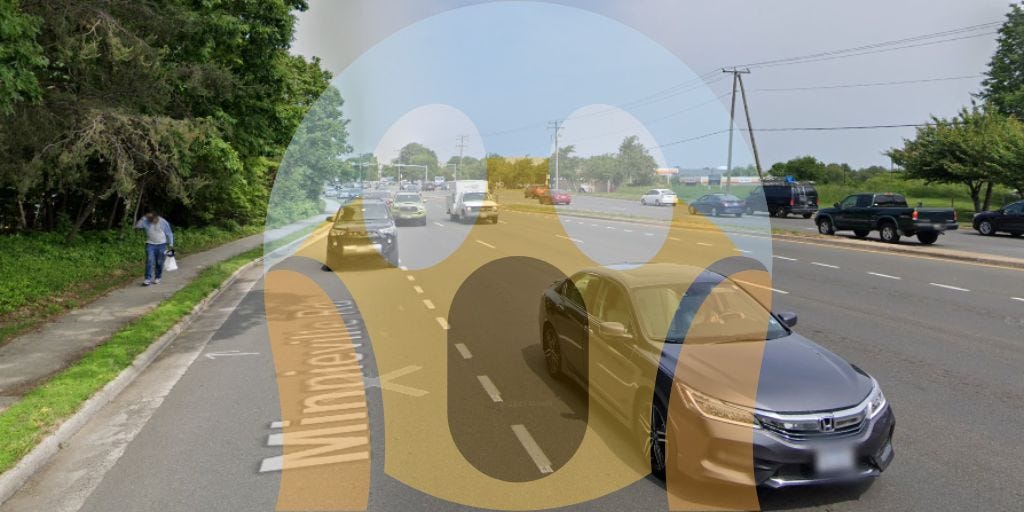
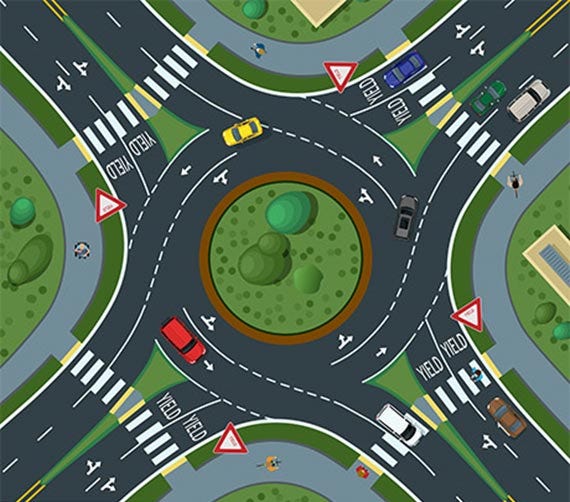
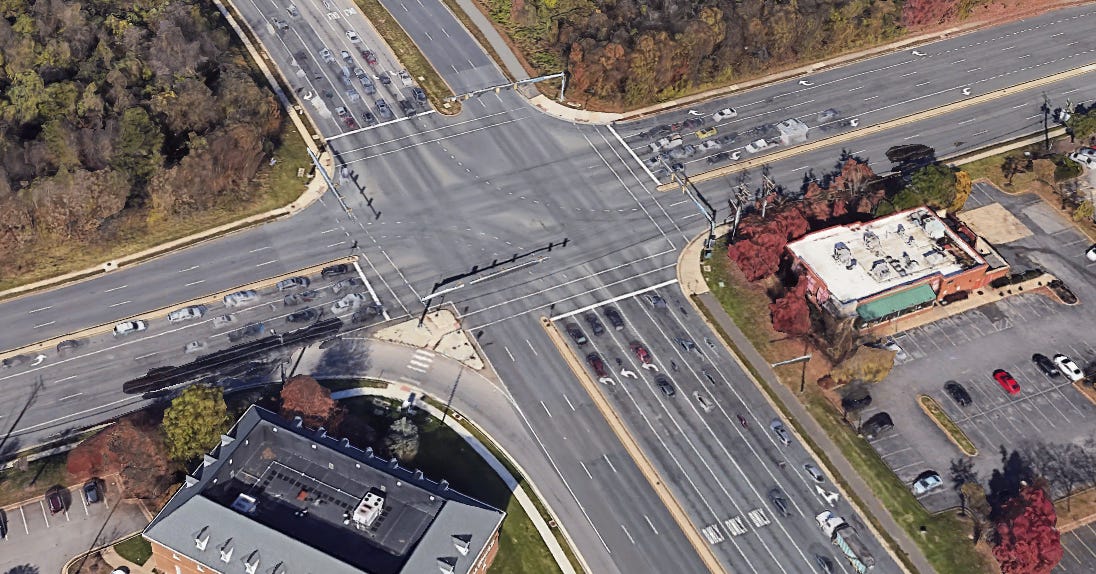


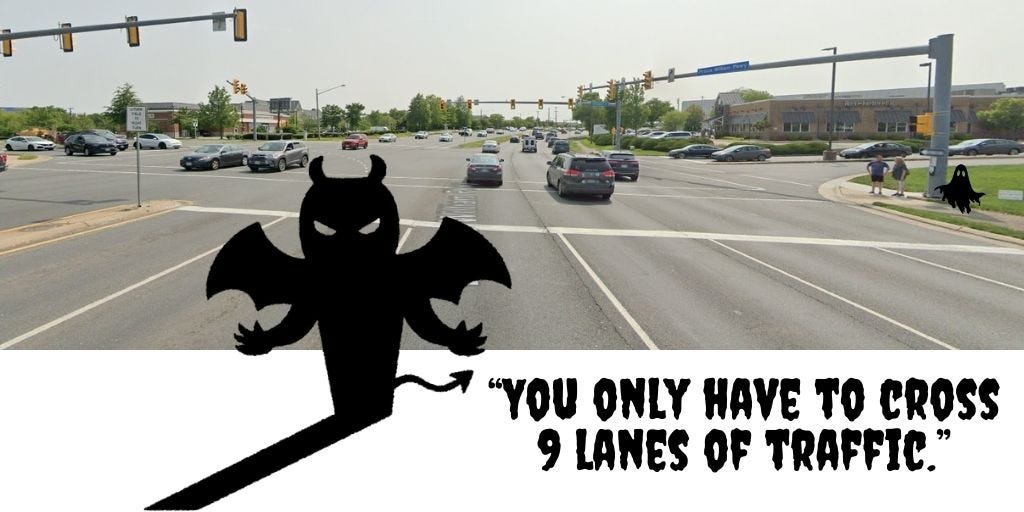
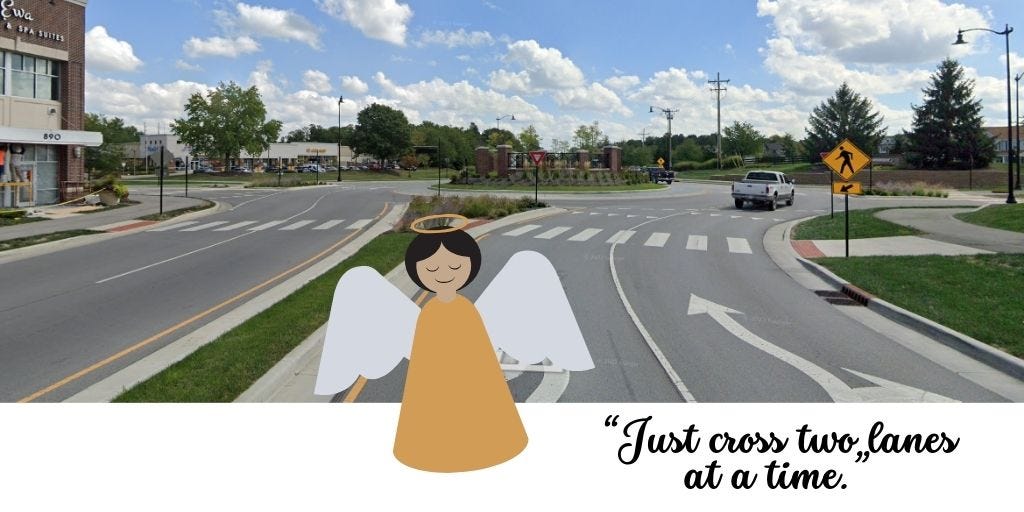

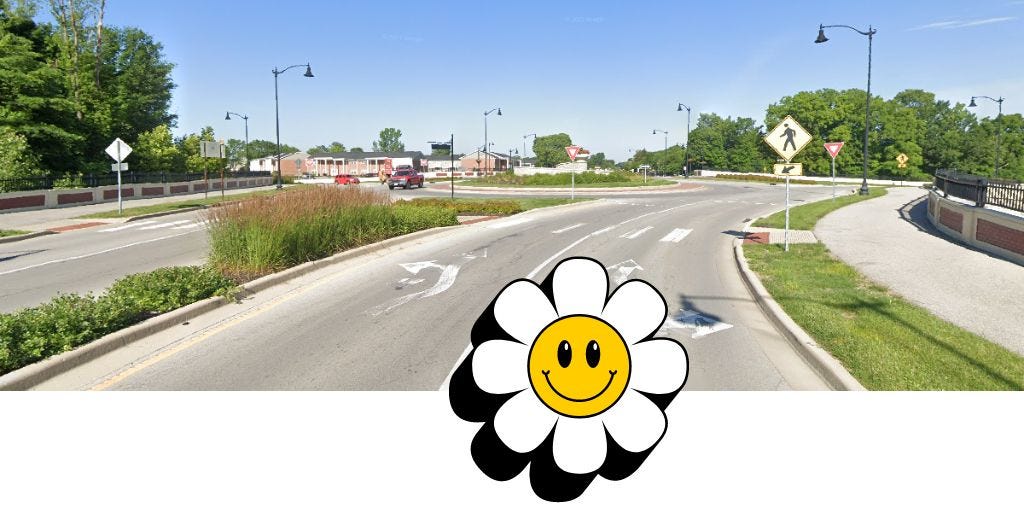
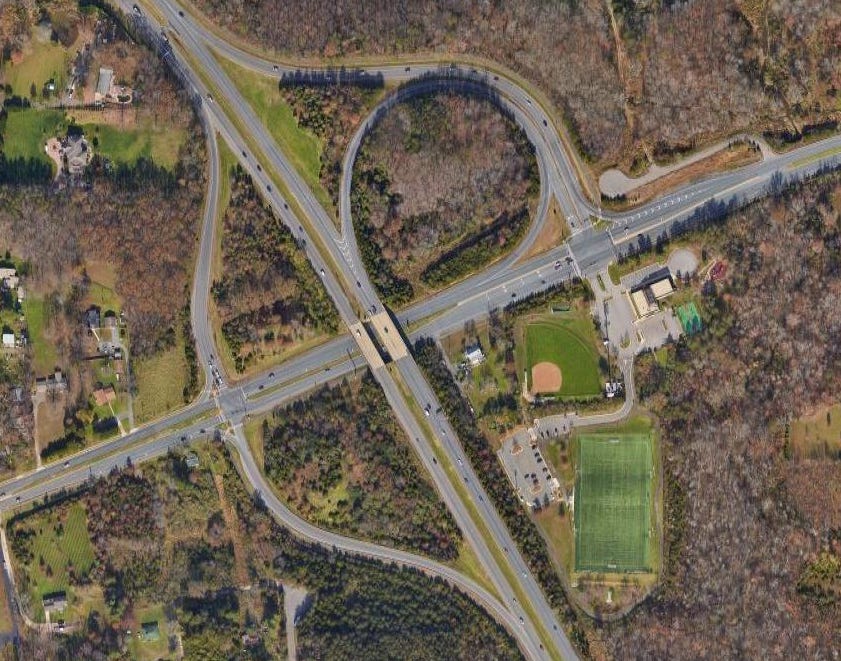
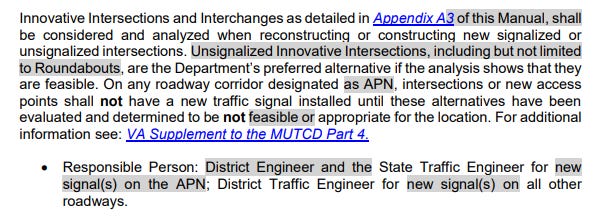


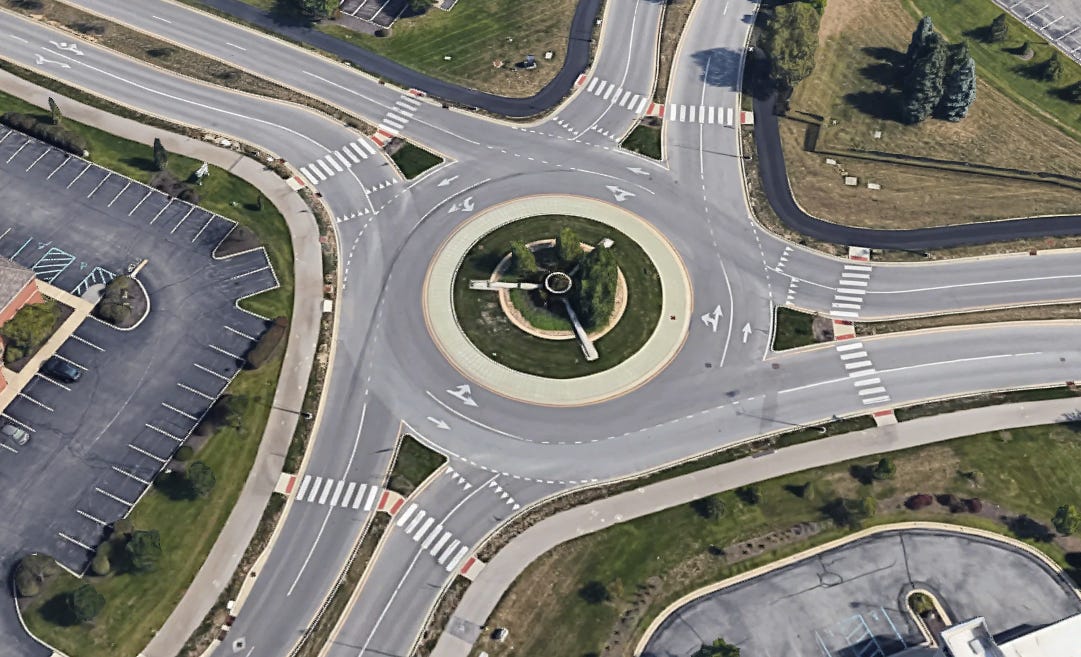
Your point that corridors with turn lanes end up widening the corridor beyond just the intersection is so rarely stated. Thank you for pointing this out!
Andy - I’ve been wanting to write something very similar for years. Of course the additional benefit is roadways are sized based on intersection throughput, so if you have smarter intersections you can also road diet the primary portion of the corridor. The opportunities to reclaim land just grows and grows. It’s my unconfirmed belief that about 80% of all major suburban intersections could be roundabouts.
Fun fact - they’re also much easier on municipal budgets since they don’t have expensive electronics that need to be maintained and replaced every so many years.